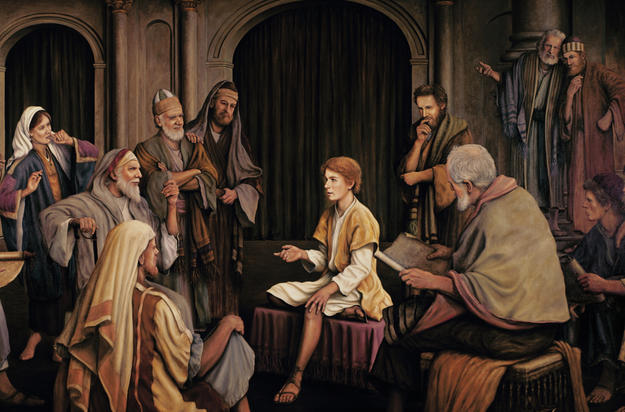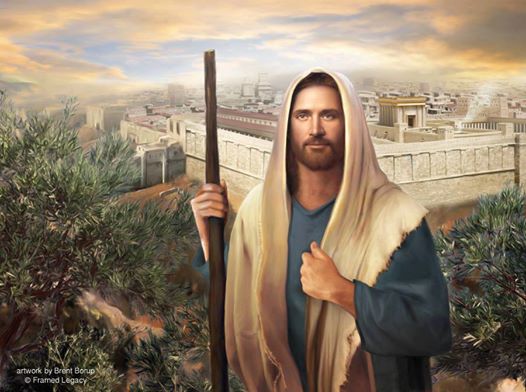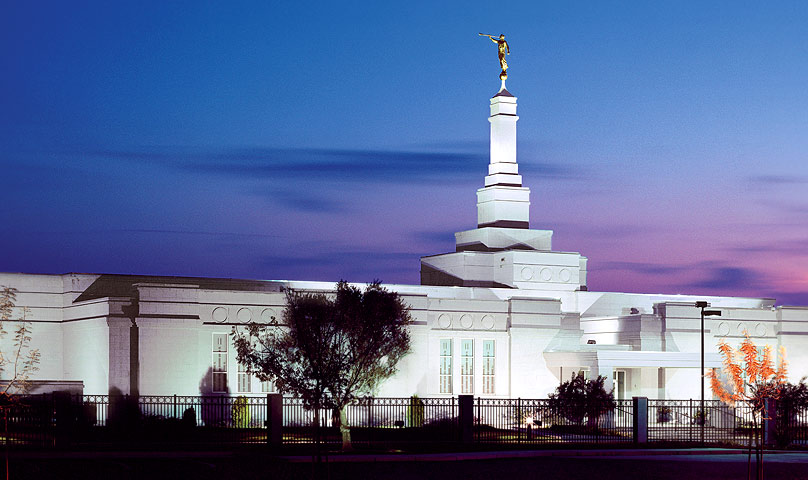Question
Gramps,
Hello. I was speaking to my niece about a month ago and she told me that she learned in college that Christ murdered people during his time before the age of 30! I couldn’t believe that came out of her mouth first of all. But she asks why there’s nothing written about him during that time. I asked her if the teacher was teaching from the Dead Sea Scrolls? And she said yes. But I told her you know I absolutely do not believe that. But I wondered if you had ever heard anything like that before? Because I would really like to give her a better answer than just that I don’t believe it. Thanks for your time.
Trish
Answer
Dear Trish,
Your original response, “I just don’t believe it” is more than an ample reply.
The Lord guided Joseph Smith in translating the Bible. When he came to the Apocrypha (those books of the Bible that are included in the Catholic canon but not the Protestant) he was told not to bother with an inspired translation because right alongside the “many things contained therein that are true” could be found “many things contained therein that are not true, which are interpolations by the hands of men.” (D&C 91:1-2). Much the same can be said of these so-called “lost books” of the Bible. They contain many truths and stories that ring true for Latter-day Saints in particular, but there are also a great many questionable accounts. “Infancy gospels” are among the worst offenders.
The authors of the Gospels place a reverent hush over the early life of our Savior, except to tell the account of His birth, His temple visit at age 12, and a passing mention that He “increased in wisdom and stature, and in favour with God and man.” (Luke 2:52). It could be that rearing the Savior was a sacred experience that led Mary to frequent pondering. Or it could have been akin to rearing a boy destined to open a new dispensation. Lucy Mack Smith described Joseph Smith’s youth in disappointing terms. “It is thought by some that I shall be likely to tell many very remarkable incidents which attended his childhood; but, as nothing occurred during his early life except those trivial circumstances which are common to that state of human existence, I pass them in silence.” (“The Revised and Enhanced History of Joseph Smith by His Mother”, page 93).
Opportunists abhor a vacuum, so records emerged after the first apostles died. 50 years or more after the Gospel of John was written (which says nothing of the infancy of Jesus, those Gospels which do (Matthew and Luke) date even earlier) we begin to find reference to the Infancy Gospel of Thomas and the Infancy Gospel of James (the actual documents themselves are much later, but this tells us that some of the contents were in circulation earlier). Later, another text gains popularity and is quoted by Jerome. This is known as Pseudo-Matthew and borrows heavily from the other Infancy Gospels.
The James account describes the miraculous conception, and adds to it a miraculous birth (turning the cave into a temple with the “luminous cloud” of the shekinah and a bright light attending the birth). An angelic attendant encourages a doubting midwife to handle the infant as a cure. The story of the wise men is also affirmed. Other stories included in this text revolve around the birth and later marriage of Mary, and the the birth of John the Baptist with some miracles performed in his favor. Some of the content may be dubious, but overall it is faith-affirming.
The Thomas account tells of a 5-year old damming a stream to make clay birds. When a kerfluffle is stirred up over the child fashioning clay on the Sabbath, Jesus brings the birds to life and they fly away. Another boy destroys the dam so naturally Jesus curses him as He will the fig tree in the future. The boy withers and dies and the parents are quite distraught. On another occasion a boy hit Jesus’ shoulder and also suddenly found himself dead. When the neighborhood raised a fuss, they were all struck blind at Jesus’ word. Jesus is then taken to school where He is to learn His letters, but already He is a master! When His teacher admits that Jesus is His superior, the child laughed and finally released the town of their blindness. This experience proved a turning point for Jesus as He now started using His power for good. A child fell off a roof and died. Child Jesus raised him back to life (primarily to prove to others that He didn’t push the other child). Another person died from a self-inflicted axe-wound and Jesus raised him back to life. Then at the age of 6 (I’m sure you thought I had jumped ahead by now, but I’m still following the text’s chronology) Jesus went to fetch water and broke the pitcher when He bumped into someone else. Rather than cursing the other person to death (my, what growth we’re seeing), He filled his cloak with water and was able to fetch the same amount that the pitcher held. At 8 He plants and harvests a supernatural amount of grain to support the poor of the village and His family. He fixes Joseph’s carpentry blunders by elongating boards. In the course of performing other chores, He heals His brother James of a poisonous snake bite. Other accounts of His difficulty with teachers and of raising the dead are also included. Finally, the 12-year old Jesus is taken to the temple and that familiar story is told.
The Pseudo-Matthew account combines the two and adds in other Gospel stories. Like the James account, it includes the miraculous conception and birth, complete with angelic attendant and doubting midwife. It inserts the testimonies of Simeon and Anna in the temple before moving on to the story of the wise men. A new story is introduced here about how beasts obey little 2-year old Jesus (“dragons”, lions, panthers, wolves, and other beasts). When Mary desires the fruit of a palm tree, at Jesus’ request it bends down to give her fruit and its roots share water with the travelling party. In return, an angel honors the tree by planting a branch in Paradise. Jesus then shortens the 30 day trip to a single day. Having arrived at Egypt, the idols fell down at His feet and the locals took that as a sign that this child is God of gods. The family returns to Galilee and here the text picks up the Thomas account. Jesus dams a part of the river to make pools for his clay birds. A child breaks the dam and Jesus curses him with death. This version of the story softens it by having Jesus raise the boy back to life at His parents’ request. Now 4, Jesus has His first trouble with teachers, and is told that He is already a master. Moving to Nazareth, we come across the story of the boy who falls off a roof and vindicates Jesus after getting brought back to life. At 6, Jesus miraculously fetches the water with His cloak and has the supernatural harvest. At 8 He parts the Jordan and crosses with docile lions. Once again, we have Jesus elongating a board to fix Joseph’s carpentry. Some time later (the timeline is no longer clear here, and we don’t have the temple scene to ground us relative to his 13th year) they move to Capernaum and raised a certain Joseph (who was wealthy) back to life. Then moving to Bethlehem, we have again the story of Jesus healing James of a viper bite. One additional mention of His youth was that Jesus led the prayers when it was time to eat, and the family would wait if He was delayed so He could offer the prayer.
Pseudo-Matthew seems to be trying to reconcile the various Infancy accounts that were available, while softening the heresy in the Infancy Gospel of Thomas. It is a mixed bag that needs a heavy dose of “enlighten[ment] by the Spirit” to “obtain benefit therefrom.” (D&C 91:5). The Infancy Gospel of Thomas seems to assume that Christ, as “God with us”, was fully charged with divine power at the moment of birth. It approaches the childhood of Jesus as a god learning to control his power. This stands in stark contrast with the testimony of Luke, who says that Jesus grew “in favour with God”, and with the testimony of His cousin John, who says Jesus “received not of the fulness at first, but continued from grace to grace, until he received a fulness.” (D&C 93:13).
Elder Talmage, agrees that much of the filler concerning Jesus’ childhood is uninspired (and uninformed) nonsense. “The silence with which the early period of the life of Jesus is treated by the inspired historians is impressive; while the fanciful accounts written in later years by unauthorized hands are full of fictitious detail, much of which is positively revolting in its puerile inconsistency…. Inventive writers would have supplied, as, later, such did supply, what we seek in vain within the chapters of the Gospels. With hallowed silence do the inspired scribes honor the boyhood of their Lord; he who seeks to invent circumstances and to invest the life of Christ with fictitious additions, dishonors Him.” (“Jesus the Christ”, chapter 9:The Boy of Nazareth). As I read this, I hear your words echo, “I just don’t believe it.”
Gramps







